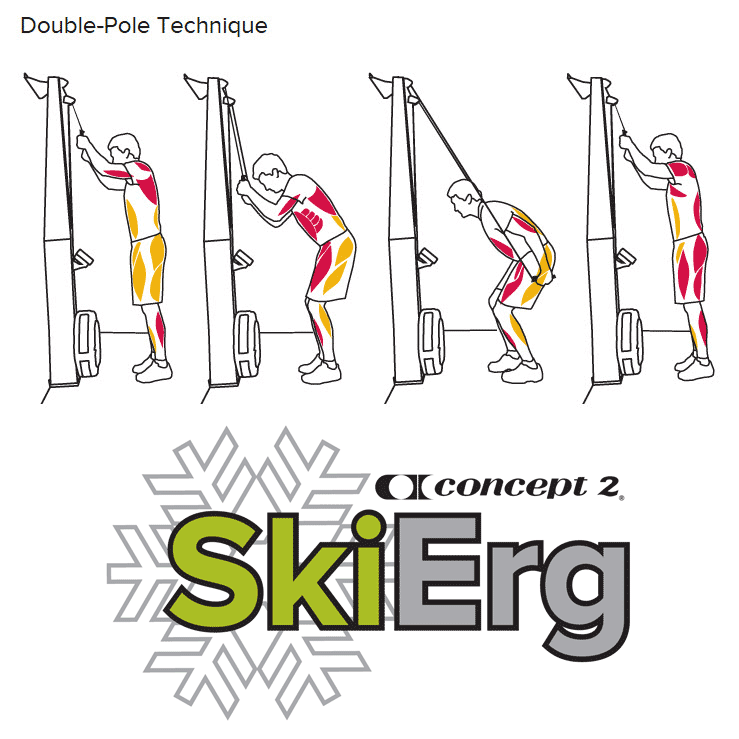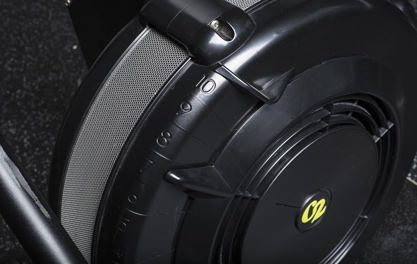15
Jan 2018
The Ski Erg – Taking Nordic Skiing Indoors!
The following content has been taken from Concept2.com, the designers of the ski erg. Give it a read to educate yourself on some of the ski ergs most basic functions. To learn even more, visit Concept2.com/skierg
The Concept2 SkiErg makes the sport of Nordic skiing available to everyone. Long recognized as delivering one of the toughest workouts around, Nordic skiing develops both strength and endurance and exercises the legs as well as the arms and core. The SkiErg can be used for both double pole and classic alternating arm technique.
An Effective Full-Body Workout
The Concept2 SkiErg helps you build strength and endurance by working the entire body in an efficient, rhythmic motion. Skiing is a low impact, high calorie burning exercise suitable for all ages and abilities. You are in complete control of the resistance: the harder you pull, the faster the flywheel spins, which creates more resistance.
Perfect for Adaptive Athletes and Injury Rehab
The SkiErg is a low impact exercise that is easy on the knees and ankles. The SkiErg easily accommodates athletes with lower leg injuries: injured athletes can sit or kneel, reducing the amount of leg involvement, while training at normal intensity and duration using just the upper body and core. It’s a great training tool for adaptive athletes, too!
Learn Proper Technique
Before your first workout, take the time to watch our technique video and visit the technique page. Learning proper technique from the start will help you ski better and faster in the long run. It will also help prevent injury and keep you from developing bad technique habits that are difficult to break.
Build Up GraduallyWhen you first use the SkiErg, resist the temptation to do too much too soon. Instead, make sure you focus on your technique and learn to maintain a steady pace. Follow our First Workouts to get you started.
Educate Yourself
Become familiar with what the damper setting does and how it controls how your skiing feels.
The damper is the lever on the side of the flywheel housing, or fan cage, that controls how much air flows into the cage. The fan cages on our SkiErgs are numbered so you can set the damper lever to a particular value from 1–10, indicating how much air is drawn into the cage on each pull:
- Higher damper settings allow more air into the flywheel housing. The more air, the more work it takes to spin the flywheel against the air. More air also slows the flywheel down faster on the recovery, requiring more work to accelerate it on the next pull.
- Lower damper settings allow less air into the flywheel housing, making it easier to spin the flywheel.
Damper setting is similar to bicycle gearing: it affects how skiing feels but does not directly affect the resistance. A lower damper setting on the SkiErg is comparable to easier gears on a bike.
Damper Setting is Not…
Many people confuse damper setting with intensity level or resistance. Instead, the intensity of your workout is controlled by how much you use your core, legs and arms to move the handles—in other words, how hard you pull. This is true regardless of where the damper lever is set: the harder you pull, the more resistance you will feel. Because our SkiErgs use wind resistance (which is generated by the spinning flywheel), the faster you get the wheel spinning, the more resistance there will be.
Think about skiing on snow. Regardless of whether you are skiing in fast or slow conditions, you will need to increase your intensity and apply more force to go faster. The difference is in how it feels to go faster in different conditions. Increasing your speed in fast conditions requires you to apply your force more quickly. Increasing your speed during slow conditions also requires more force, but the speed at which you apply the force will be slower over the course of the pull.
At a damper setting of 1–4, the SkiErg feels like faster snow conditions, flats and down hills; at the higher numbers, the SkiErg feels like skiing in slow conditions or uphill. Regardless of the setting, you will need to increase your effort to increase your intensity.
What Damper Setting to Use
With a little experimentation, you will find the damper setting and drag factor that work best for you. We recommend starting out on a damper setting of 3 or lower. Resist setting the damper lever too high; this can exhaust your muscles before you reap the full cardiovascular benefit skiing provides. The Performance Monitor will give you immediate accurate feedback on each stroke so that you can monitor your performance and determine where you get your best results.
You can also vary your damper setting to achieve different types of workouts. In general, lower damper settings are best for aerobic workouts, while higher damper settings make skiing more of a strength workout.
* All of the information on this page has been provided by Concept2.com


 Facebook
Facebook Instagram
Instagram

